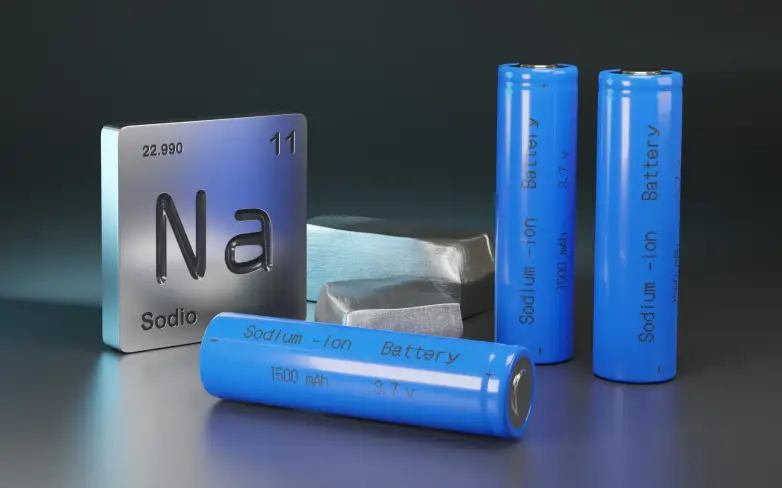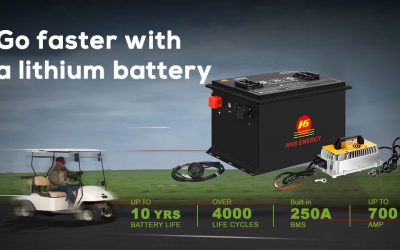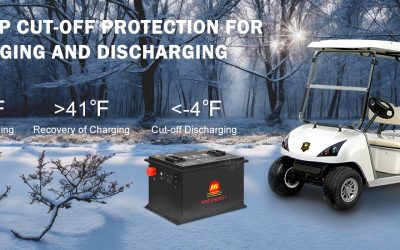What are the Advantages of Sodium-Ion Batteries?

In the quest for sustainable energy storage, sodium-ion batteries are emerging as a promising alternative to lithium-ion. While lithium-ion batteries have long dominated portable electronics and electric vehicles, sodium-ion cells offer a unique set of benefits that make them well-suited for grid storage, renewable energy buffering, and cold-weather applications. This article explores the key advantages of sodium-ion batteries and provides a detailed comparison chart of their parameters versus other mainstream chemistries.
1️⃣ Abundant and Low-Cost Raw Materials
One of the primary advantages of sodium-ion batteries is the abundant availability of sodium. Unlike lithium, which requires mining in specific geological regions, sodium can be sourced from common salt (sodium chloride) found in seawater and the earth’s crust. This abundance significantly reduces material costs and mitigates supply chain vulnerabilities, making sodium-ion an appealing option for countries with limited access to lithium resources.
Why It Matters:
-
Reduces dependence on geopolitically sensitive lithium supplies
-
Potentially lowers the price of large-scale energy storage systems
-
Supports more sustainable, localized production
2️⃣ Safety and Stability
Safety is a critical factor in battery applications, particularly in stationary storage and public transportation. Sodium-ion batteries are considered inherently safer than lithium-ion batteries because they are less prone to thermal runaway—a chain reaction that can lead to fires or explosions.
Key Benefits:
-
Lower risk of overheating and combustion
-
Enhanced stability for large-scale installations
-
Increased peace of mind for operators and consumers
3️⃣ Better Low-Temperature Performance
Sodium-ion batteries have demonstrated superior performance at low temperatures compared to lithium-ion cells. This advantage makes them ideal for applications in colder climates or scenarios where temperature fluctuations are common.
For instance, sodium-ion batteries can maintain efficient charge and discharge cycles at temperatures below freezing, making them suitable for remote energy storage in northern or alpine regions.
4️⃣ Environmental Sustainability
From an environmental standpoint, sodium-ion batteries present a lower ecological footprint:
-
Sodium is non-toxic and easy to recycle compared to lithium.
-
Extraction processes for sodium are generally less damaging to ecosystems than lithium mining.
-
Less environmental disruption means sodium-ion aligns better with long-term sustainability goals.
5️⃣ Potential for Grid-Scale Storage
While sodium-ion cells may not match lithium-ion’s energy density for portable electronics, they are particularly well-suited for stationary energy storage. Grid storage applications—like stabilizing renewable energy or managing peak loads—do not require ultra-high energy densities. Instead, they benefit more from cost-effectiveness, safety, and cycle life, all of which sodium-ion batteries can offer.
🔬 Comparative Table of Battery Parameters (2025)
Below is a comparative chart of sodium-ion batteries versus other common chemistries: lithium iron phosphate (LiFePO₄), lithium polymer (LiPo), lithium titanate (LTO), and traditional lead-acid (AGM) batteries.
| Battery Type | Energy Density (Wh/kg) | Cycle Life (Cycles) | Nominal Voltage (V) | Operating Temp (°C) | Charge Rate | Safety | Primary Applications |
|---|---|---|---|---|---|---|---|
| Sodium-Ion (Na-ion) | 100–160 | 1,000–2,500 | 2.3–3.0 | -20 to 60 | Moderate | Very High | Grid storage, e-scooters, solar backup |
| LiFePO₄ | 120–160 | 2,000–6,000 | 3.2 | -10 to 55 | Fast | High | EVs, golf carts, home energy storage |
| LiPo | 150–250 | 500–1,000 | 3.7–3.8 | 0 to 45 | Moderate | Medium | Phones, laptops, drones |
| LTO (Lithium Titanate) | 70–90 | 5,000–10,000+ | 2.4 | -30 to 60 | Very Fast | Very High | Industrial, buses, UPS, military |
| Lead-Acid (AGM) | 30–50 | 300–500 | 2.0 | 0 to 40 | Slow | Medium | Golf carts, forklifts, backup power |
6️⃣ The Future Outlook for Sodium-Ion Batteries
Although sodium-ion batteries are not a drop-in replacement for lithium-ion in most consumer electronics or high-energy EV applications, they are rapidly evolving. Major battery makers like CATL have begun pilot production lines, and companies like Faradion and Natron Energy are targeting grid storage and light mobility.
Sodium-ion batteries’ relatively lower energy density is less of a concern for stationary installations, where size and weight are secondary to cost and safety. As such, sodium-ion could become the dominant chemistry in these markets within the next decade.
7️⃣ Final Thoughts
Sodium-ion batteries offer a compelling balance of safety, cost, sustainability, and cold-weather performance that make them a serious contender for specific energy storage applications. While they are not as energy-dense or as widely deployed as lithium-ion batteries today, ongoing research and industrial investment are rapidly closing the gap.
For residential, commercial, and utility-scale energy storage, sodium-ion batteries could help reduce costs and improve environmental outcomes. For mobile and high-power applications, lithium-ion chemistries still have the upper hand in performance. As the global energy landscape continues to shift, sodium-ion batteries will undoubtedly play a vital role in the diversified energy mix of tomorrow.





